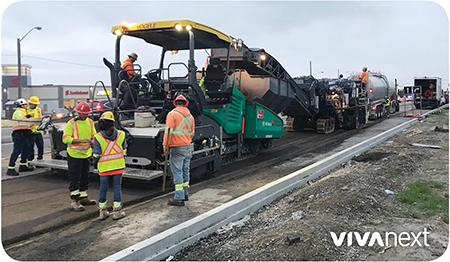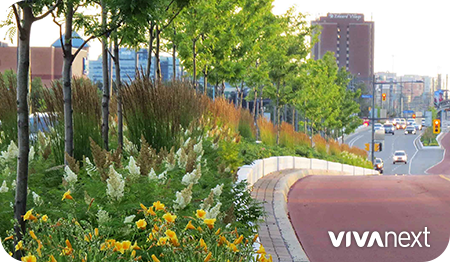
Here at vivaNext, we think paving techniques and processes are uniquely fascinating. This summer, crews have been paving a base layer of asphalt on Highway 7 West, Bathurst Street and Centre Street, using a method known as “CIREAM”, or Cold in-Place Recycled Expanded Asphalt Mix.
With CIREAM, the process for base-layer paving is reduced to one complete operation; rather than milling old asphalt and hauling it away, CIREAM is essentially recycling. Here’s how it works.
all aboard the paving train!
The paving crew works a train of three connected machines – the cold milling machine, the cold recycler, and the paver:
- The cold milling machine removes the approximately 100 millimetres of the existing asphalt.
- The cold recycler machine then picks it up and blends it with an asphalt-concrete liquid. This mix is then put back on the road.
- The paver machine paves the new asphalt back onto the road. Finally a roller compacts the repurposed asphalt.
advantages + benefits
One of the big benefits of CIREAM is speed. It’s simply faster than regular paving because these three operations happen without having to haul away and dispose of the old asphalt, and it cures more quickly as well. Speaking of haulage and disposal, CIREAM is more environmentally friendly since the old asphalt is reused.
CIREAM paving turns cracked and uneven asphalt into a smooth surface for vehicles and creates an excellent base for future final paving.
For information about ongoing vivaNext projects, be sure to subscribe to email updates, and follow us on Twitter. Questions or comments? Comment below or email us at contactus@vivanext.com.

